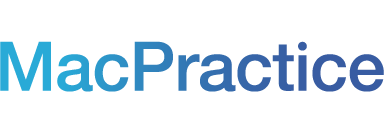
By Mark Hollis
Dentists will be happy to learn they can still receive government incentive payments for the adoption of Electronic Health Records (EHRs) for 2014 and 2015 if they acquire (or already have) certain certified software with EHR.
Dentists who want to participate and receive government incentives of $63,750 per provider for Medicaid, even those who have not done anything yet, can still receive a first-year payment of $21,250 per provider for 2014 if they qualify, and that's a great way to end the year! They just need to purchase 2014 Edition Certified software, such as MacPractice DDS MU 5.0, this year.
A dentist could receive his or her check in early 2015, demonstrate Meaningful Use (MU) for any 90 days of 2015, and then immediately apply for the second incentive payment. In order to qualify for Medicaid incentives for 2014, eligible providers must purchase a 2014 Edition Certified Complete EHR by December 31, 2014. Only a 2014 Edition Certified EHR listed on CMS.gov (not software that is in the process of being certified) qualifies for Medicaid incentives for 2014 or 2015.
In the second year of their participation in the Medicaid program, eligible providers are permitted to select any 90 days to demonstrate MU. In subsequent years they must demonstrate MU for the full year. Medicaid providers are also permitted to skip a year of attestation.
Medicaid providers for whom 2015 will be their first year can also purchase 2014 Edition Certified software and immediately apply as early as January for their first year incentive payment of $21,250 per provider.
Dentists who bill Medicare for any procedures that they perform, whether or not they are a participating provider, and who want to qualify for Medicare incentives for 2014, must have demonstrated MU of a 2011 ONC/ATCB Certified Complete EHR, such as MacPractice DDS 4.4, and have performed (first-year attesters) or reviewed a Security Risk Analysis for their practice by December 31, 2014. The absence of a first-year risk analysis or review of a risk analysis in a subsequent year is one of the most common reasons for an auditor to require a return of payment. An audit can be conducted for up to six years after each year of attestation. This coming year is expected to be “the year of audits.â€
On January 1 or the first day of business, if a Medicare provider intends to demonstrate MU Stage 1 2014 in their second year, they must be using a 2014 Edition Certified EHR or MU Stage 2 if they are in their second through fifth year.
If providers plan to use a different EHR or a different version of the same EHR, especially if they used a 2011 Certified EHR for MU to attest for 2014, they must maintain a complete backup of the 2011 certified software and their data for at least six years so they can restore to a computer in the event of an audit. Auditors have been requiring reports, screenshots, and more. The deadline for attesting for MU in 2014 is February 28, 2015.
There is still a benefit to Medicare providers who demonstrate MU of a 2014 Edition Certified EHR for 90 days of 2015 and for whom 2015 will be their first year. Although they cannot qualify for government incentives, they can reduce Medicare penalties in 2016.
Mark Hollis is cofounder and CEO of MacPractice, Inc., which supports 15,000 providers in 4,000 practices. MacPractice DDS is one of the leading practice management and clinical software companies for dentists who prefer the ease of use, reliability, and lower total cost of ownership of Apple technologies.
MacPractice DDS earned the designation of 2011 ONC-ATCB Certified Complete EHR in February 2011. MacPractice DDS 5.0 MU achieved 2014 Edition Certification as a Complete EHR in June 2014. Mr. Hollis has led MacPractice's team of MU experts in advising clients as they navigate the regulations and many regulatory modifications and legislative changes to the EHR Incentive programs, and as they qualify for incentive payments and gird themselves to withstand audits.
